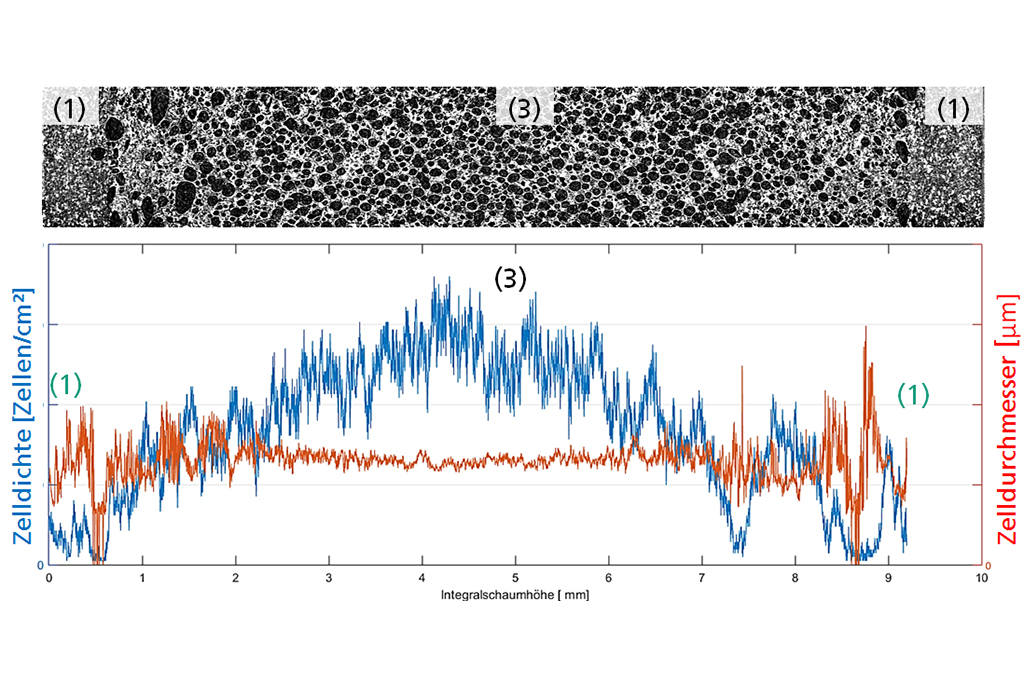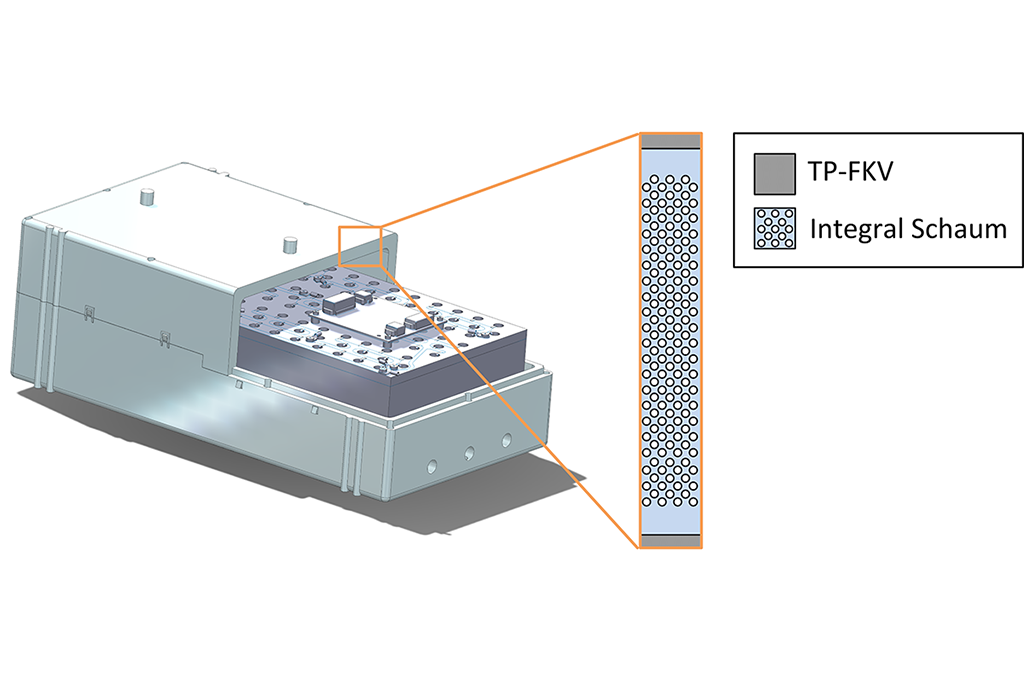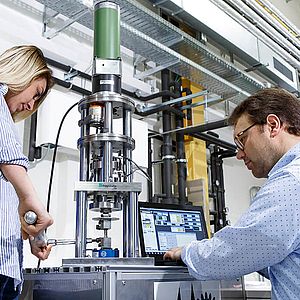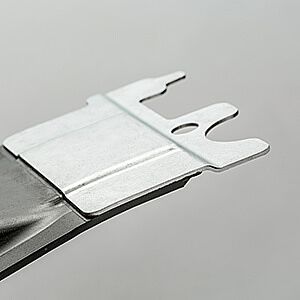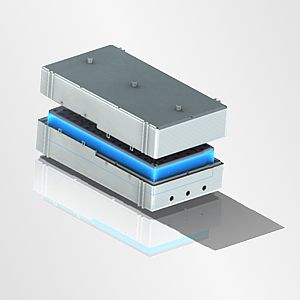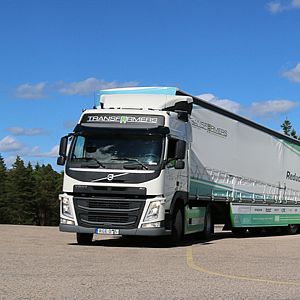Traction battery as thermal storage to extend the range of electric vehicles.
E-Mobility, Thermal Management, Lightweight Design
Battery electric vehicles (BEV) have been gaining market shares for years and are particularly interesting for purchasers in the increasingly heavily polluted urban environment. Although increased battery capacities are progressively enabling longer distances, the range still varies greatly depending on the ambient temperatures.
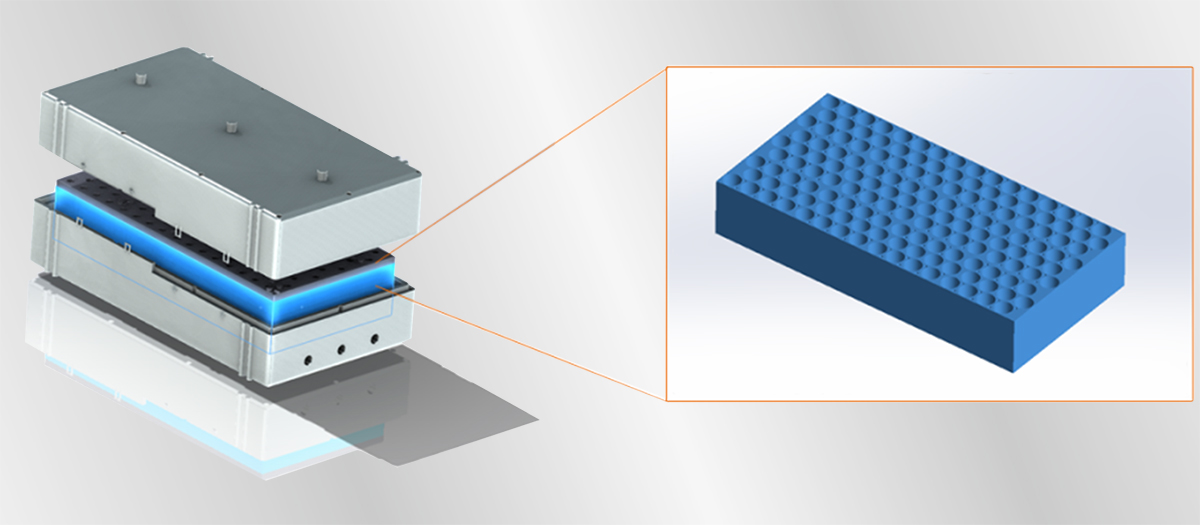
Within the EU project OPTEMUS, a large number of efficiency-enhancing technologies have been developed and interlinked, in particular to reduce the fluctuation in range of the Fiat 500e electric vehicle. These technologies extend from solar panels and regenerative shock absorbers to cloud-based driver and route profiles, passenger comfort technologies and a traction battery capable of storing heat (Fig. 1).
Fraunhofer LBF played a significant role in co-designing this traction battery. As a result, a phase change material composite system (PCM composite) was developed, making it possible to store thermal energy selectively within the battery. This can be used, for example, to keep the temperature-sensitive battery cells at optimum operating temperature for longer in cold weather conditions without needing to actively heat the battery. Conversely, the PCM composite allows the storage of short-term, heat increases in the battery, which can occur during rapid charging for example.
Also a thermally insulating, polymer-based battery housing was developed at Fraunhofer LBF to thermally decouple the PCM composite from the environment and thus make temperature control easier. It is based on a polymer integral foam which ensures its insulating ability. Based on 3D computer tomography (Fig. 2), a morphology analysis was developed for investigating and evaluating different polymer integral foams with regard to their foam morphologies and therefore their insulating ability.
As the polymer foam has only low strength and stiffness, it is covered with high-strength, thermoplastic fiber-reinforced plastics (FRP) to carry the loads arising during operation safely to the battery. For this purpose, a laminate was made from several FRP layers only 0.25 mm thick (UD tapes) and shaped three-dimensionally. Two of these laminate shells completely cover the foam core. This resulting sandwich structure (Fig. 3) has high lightweight design potential and leads to high specific flexuaral properties as well as impact resistance, providing good protection from intrusion events.
To meet the requirements of the automotive application, both material and structural concepts have been developed in such a way that they are suitable for cost efficiency and large-scale production. Production of the thermally insulating housing is implemented, for example, using a hybrid foam injection molding process developed by Fraunhofer LBF, which for the first time makes it possible to produce three-dimensional FRP sandwich components in rapid cycle times.
Förderer “The OPTEMUS project is funded within the Green Vehicle Initiative as part of the H2020 framewor
Customer benefits
Thanks to the material, structural and process technologies developed, the customer’s benefit is that his BEV has a uniform range. Vehicle developers and design engineers benefit from a new process technology for functional integration and lightweight design.
The OPTEMUS project is funded within the Green Vehicle Initiative as part of the H2020 framework.
Contact
- Felix Weidmann
- Phone: +49 6151 705-8843
- felix.weidmann@lbf.fraunhofer.de
